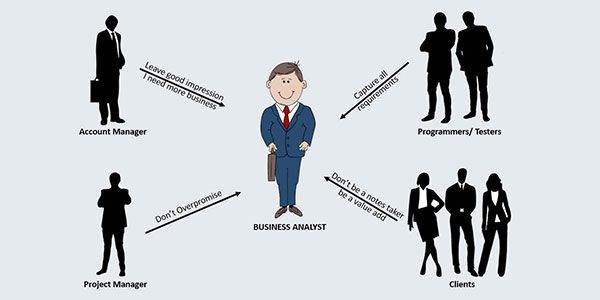Being a Business Analyst, carrying burden of expectations
Business Analysts work across different teams. We expect a lot from them. They are the face of a company when traveling to the client’s site.
Account Managers expect them to leave a long-lasting positive impact on clients, after all, account managers are always looking to get more business from existing clients. Project Managers are often worried that Business Analyst may overpromise on anything which they may not fulfill. Developers and testers have their concerns regarding requirements. They want requirements which are detailed, clear and easy to understand. And as for clients, they want you to be more than a “Note Taker”, someone who can add value to the project. And yes, they don’t want to repeat things which have already been conveyed to you or your team.
So how can you fulfill everyone’s expectation? Below are starting points to help you in this regard.
- Know about your customer and their industry. You should be thorough with the products, services and the market your customer has focused on. This will help you during the requirement and solution designing phase to clearly visualize the need of an application. If you know the business of your client, you will be able to make a more informed decision and can contribute more towards your clients’ goal.
- Make sure you know the boundary of your work and structure of deliverables. The best way is to go through Request of Proposals or Statement of Work to extract the information regarding a project. You may also want to interact with your sales team to get firsthand information on your client. If this is an existing account where you are joining late, be sure to know about the processes, templates for documentation and system in scope.
- Engage with your internal team from the beginning until very last. It’s imperative that you know your internal team, their expectations and any concerns they may have. Discuss on the expectations from the documents you will be preparing. Regular interaction with the team will make sure that all that is needed (i.e., the requirements) has been conveyed and understood by them.
- If working with different vendors in a project, make sure you know what their role will be in the project, what is expected from them and any dependencies to you (or vice-versa). Ask for these information upfront and plan your work accordingly.
- In summary, the key here is to know the customer and their industry well. Understand the need and objective of the project, know about the key success criteria, avoid asking everything about everything and start contributing.
Being a Business Analyst is just not documenting requirements from customers, it involves business analysis which is fundamental to any project. You should be able to convey your thoughts and understanding to the clients, help them to understand the implications of insignificant requirements, and make them aware or contribute in understanding their competition. After all, in this era of constant change and stiff competition, no one needs a note taker. Be a contributor!


